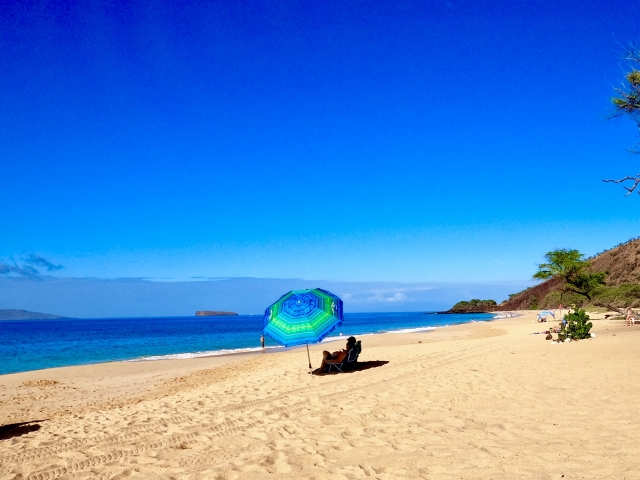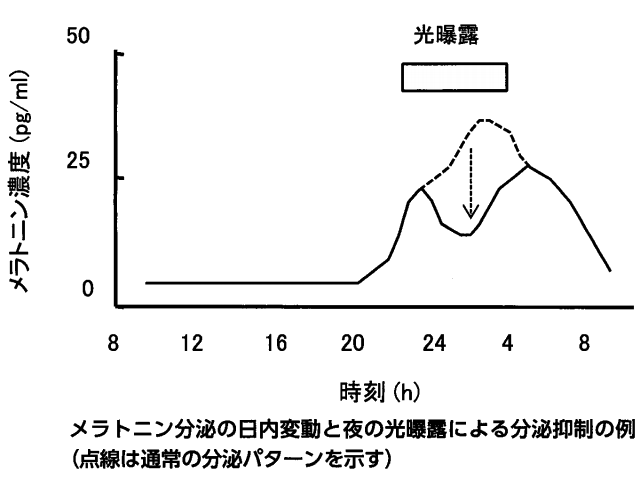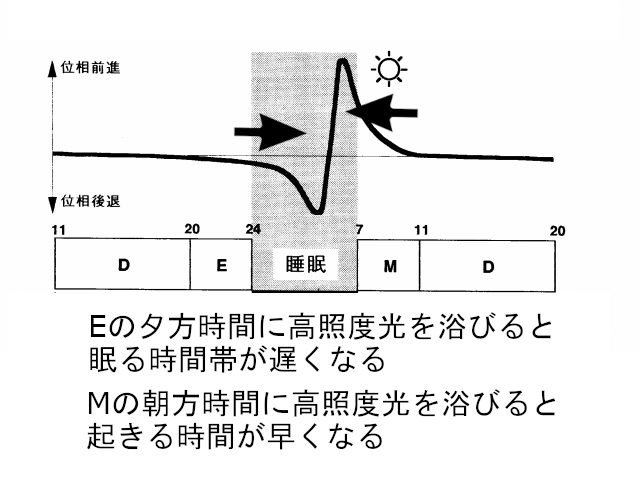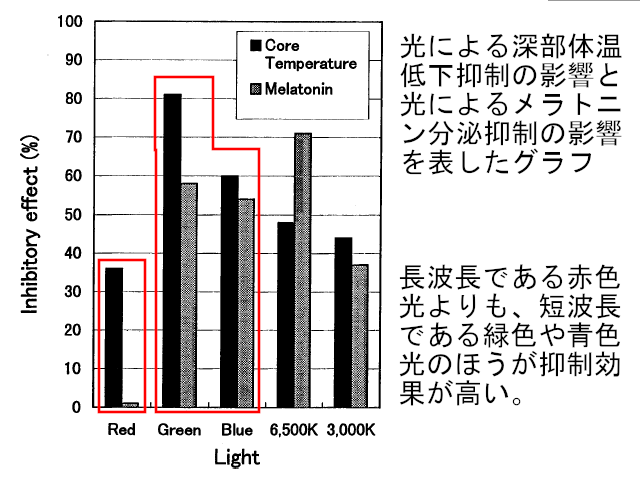Get some sunshine upon waking up

The research paper, 概日リズム睡眠障害と光, is cited and referenced.
Exposure to the sun upon waking has the effect of regulating the circadian rhythm of the organism. A circadian rhythm is a rhythm that repeats in a 24-hour cycle. It may be easier to understand if we refer to it as the body’s internal clock.
Sometimes, patients present with abnormalities in the coordination of sleep-wake timing, even though there are no significant abnormalities in the sleep itself. This type of sleep-wake disorder is called circadian rhythm sleep disorder. It is assumed to be caused by some dysfunction of the body clock or its regulatory system. The key to the pathophysiology and treatment of these disorders is thought to be the light environment. Although we are usually unaware of light as long as it is bright enough to see objects, it plays a crucial role in the regulation of biological rhythms.
If you can regulate your circadian rhythm, you can imagine that you will always be able to sleep at about the same time. You will wake up at the same time, eat breakfast at the same time, and have a bowel movement at the same time. This is also possible by adjusting your circadian rhythm.
In addition, regulating circadian rhythms also affects body temperature regulation. Body temperature has a constant rhythm of rising and falling throughout the day.
Hormone secretion and blood pressure are also thought to be influenced by circadian rhythms. Oxytocin, a stimulant, cortisol, a stress hormone, and melatonin, a sleeping substance, are also influenced by circadian rhythms.
The figure below illustrates the daily variation in melatonin secretion. Melatonin is sometimes called the sleep hormone because its secretion begins shortly before sleep, creating a state that puts us into a state of sleep. You can see that it is flat from 8:00 in the morning to around 8:00 at night, and that secretion begins around 8:00 at night. Normally, the secretion of melatonin is at its maximum around 2:00 a.m., as shown by the dotted line, but strong light exposure causes a drop in melatonin secretion, as shown by the solid line.

Physiological action of light
Light is extremely influential in the body’s internal regulation and, depending on how it is used, can be both the etiology and the cure.
In humans, as in many other organisms, natural light has an important and powerful influence on circadian rhythms. High intensity light, especially between 2000 and 10,000 lux, acts effectively as a synchronizing factor. The human daily biological clock is said to be 24.2 or 25 hours long, and there is a mechanism that corrects the time deviation from the biological clock based on this light information from the outside world.
High-intensity light alters the circadian rhythm phase on the following day. A phase-response curve is a plot of the irradiation time of high-intensity light on the x-axis and the next day’s phase variation on the y-axis. According to this curve, early morning exposure to high-intensity light accelerates the time of falling asleep and the time of awakening on the following day. Conversely, exposure to high-intensity light from midnight to late at night delays the time of falling asleep and the time of awakening. Exposure to high-illumination light during the day has little effect on sleep onset and wake-up times. Standard indoor lighting is several hundred lux, and its effect on circadian rhythms is not as strong as that of daylight.

The following article cites and references a research paper entitled The influence of different wavelengths of light on human biological rhythms.
In addition, long-wavelength light such as red has little effect on circadian rhythms, while short-wavelength light such as green and blue has a greater effect on circadian rhythms.

In addition to regulating circadian rhythms, light is known to have many other effects on the body. These include activating brain wave activity, increasing body temperature, prolonging the time it takes to fall asleep, and increasing work efficiency.
High intensity light therapy
Phototherapy is a type of physical therapy in which full-wavelength light of high intensity is irradiated at specific times of the day. Currently, it is widely applied to circadian rhythm sleep disorders and has therapeutic effects. Using a light illuminator consisting of 8 to 10 fluorescent lamps with full-wavelength bands, patients are exposed to high-intensity light of 2000 lux or more for several minutes to 2 hours at specific times during the day. The most important aspect of adjusting the light illuminator is to achieve an illuminance of at least 3000 to 5000 lux at a distance of approximately 1 m vertically from the light illuminator’s irradiating surface. For light therapy to work, a certain amount of light must reach the retina of the patient. Therefore, it is necessary to confirm with an illuminance meter that sufficient illuminance is obtained at the eye position when the patient sits in front of the light illuminator. Incidentally, a room light provides only about 500 lux at the ocular position when viewed directly. Reported side effects of phototherapy include headache, eye strain, fatigue, irritability, dry mouth, sweating, facial hot flashes, mild palpitating sensation, dizziness, and insomnia. The frequency of complaints ranges from a few percent to several dozen percent, but only a few cases require discontinuation of phototherapy due to side effects. In addition, these symptoms disappear quickly after discontinuation of irradiation.
However, sunlight is still easier, less expensive, and more effective.
At any rate, exposure to sunlight upon waking can be a factor in sleeping well. Conversely, exposure to high-intensity light at night can lead to poor sleep.
I actually did it
In fact, I have tried it with my 3 year old. He always sleeps upstairs and his bedroom is located on the west side. Therefore, there is not much sunlight in the morning. I wake him up around 7:00 am, but he doesn’t wake up. Since he doesn’t wake up, I carry him in my arms to the living room on the first floor.
Since the first floor is almost entirely living room, the window is also located on the east side. Therefore, the curtains are opened to allow sunlight to enter. Until now, I used to change clothes and brush his teeth without opening the curtains. When I started to change clothes with the curtains open, he started to ask himself if he wanted to go to sleep around 8:00 to 9:00 p.m.
He used to have a hard time falling asleep, and it was common to fall asleep at 23:00 and often past 24:00. I feel that being exposed to sunlight helps to regulate his body clock.
There are lighting fixtures like this
Red light and low illumination are available before sleep. The luminaire also has a sunrise function that helps wake you up in the morning by slowly intensifying the light. It also has an audible wake-up function. 3300 lux of light can be emitted, with a maximum of 20000 lux.
Totonoelite creates a sleep environment for everyone from babies to adults.


コメント